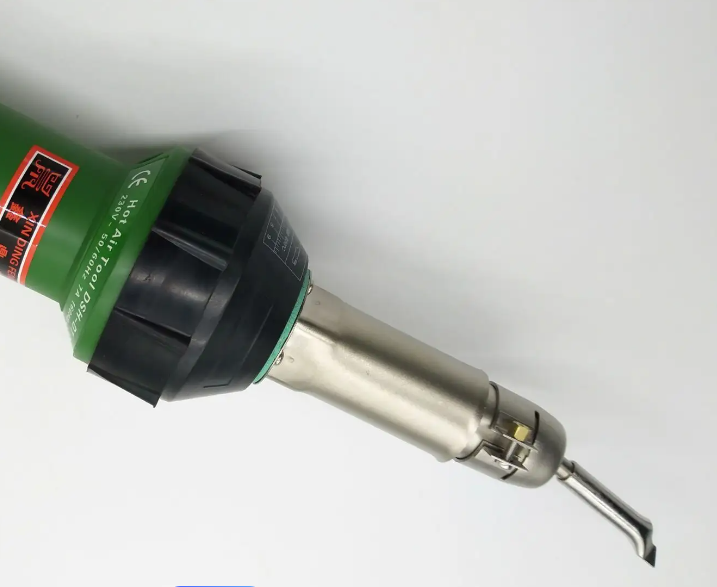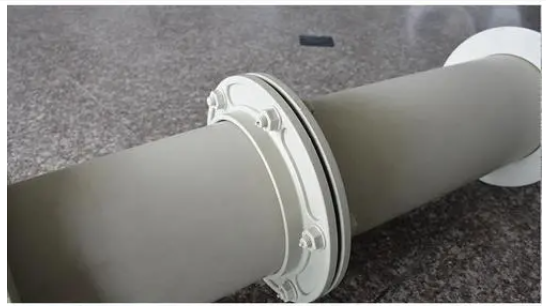- PP pipe is a non-toxic, hygienic, high-temperature resistant and recyclable pipe type, which is mainly used in the indoor hot and cold water supply system of buildings, and is also widely used in heating systems.
- PP pipe is characterized by no rust, wear resistance, no scaling, reduced vibration and noise, anti-freeze cracking (PP pipe freeze cracking at low temperature of more than -20 °C, decomposition in high temperature working environment as long as it exceeds 70 °C, and the use temperature is -20 °C to 70 °C), anti-condensation, less heat loss, simple installation, and long service life. There are three types of connection methods: welding, end edge welding, and heterogeneous material pipe.

Introduction to welding methods
Torch Welding Method:
- Grind off the surface layer of the joint end of the pipe or piping parts with sandpaper, if there is still grease on the surface, wipe it with vinyl chloride or acetone; Insert both ends into the welding sleeve, and the two ends must be inserted into the middle point of the welding sleeve, and there shall be no water at the two ends when inserting. Then insert the secondary wire of the welding controller and start welding. During the process, it is not allowed to move or touch the power supply or loosen the junction of the secondary wire. One hour after the completion of welding, the joint is completely cooled before pressurizing the tube and pulling the tube from the outside to ensure that the joint is not deformed.
- The straight pipe must be cut with a pipe cutter first, and the socket must be very flat, and the part of the socket inserted into the welding sleeve shall not have more than 1mm scratches or deformation. The used welding sleeve should not be used again, if the welding sleeve is damaged or deformed, it should be discarded and not used. If the connection fails, it should be replaced with a new welding sleeve and re-welded, if the welding sleeve fails due to power cut-off in progress, it will be completely cooled and then plugged in the secondary wire for re-welding. If the welding is completed, the pipe needs to be stressed immediately, and cold water can be poured to cool it.

Splicing of pipes made of different materials
(1) Compression ring joint connection method
A. Protruding flange method:The connection of polypropylene pipelines with other conveying pipelines or valves should be connected with flanges. First, the flange is inserted into the polypropylene pipe, and the flange joint part is welded to connect the flange end parts, and then the flange is joined with other pipe ends.
B. Plug-in mechanical joints (synthetic rubber joints):Polypropylene pipes and vents, drains, equipment and sinks should only be connected with plug-in mechanical joints. The coupling must be in the same series of products as the polypropylene pipe and parts, and be assembled according to the characteristics of the series of products.
C. Connecting sleeve connection method: When the polypropylene pipe and other materials of the pipe are connected, such as PP and PVC, PP and cast iron pipe, etc., the pipe is inserted into the connecting sleeve and then bolted the screws on the connecting sleeve, but the pipe diameter specification should meet the size of the connecting sleeve.

Inspection method after welding is completed
(1) Visual inspection: before, during and after welding, it can not produce the following situations:
A. The weld flange is uneven, too large or too small.
B. The two tubes are not on the same axis.
C. The weld flange surface is shiny (indicating overheating and excessive cooling stress).
(2) Non-destructive testing:
A. Attach a metal pin to the form of an electric pistol to detect air leaks and impurities at the weld.
B. X-ray inspection: all defects can be detected from the X-ray map.
C. Mechanical and destructive testing:Hydrostatic test: Some welding shortcomings can be detected by hydrostatic test.
